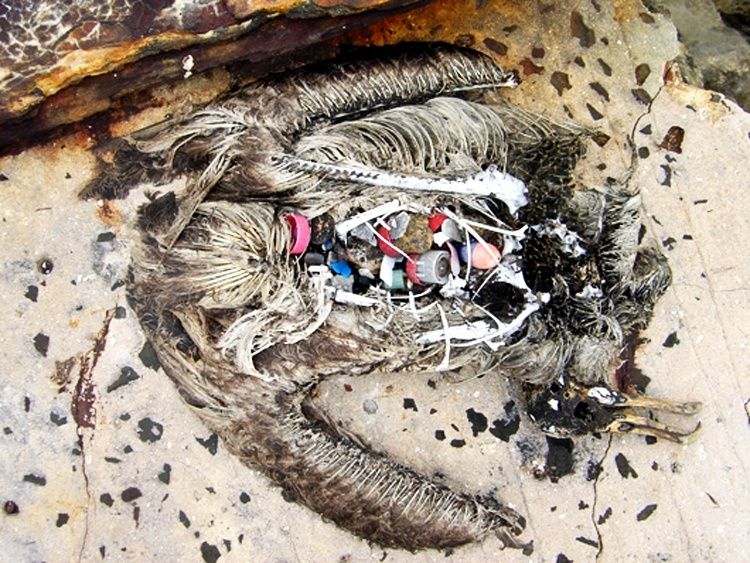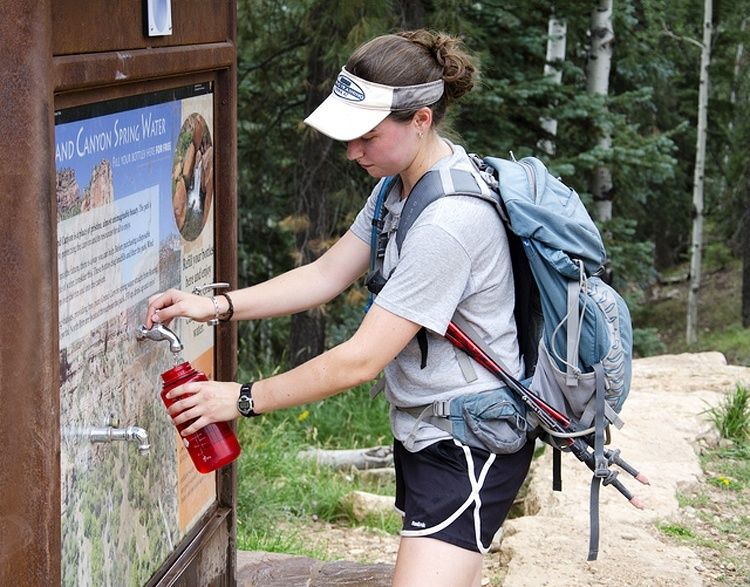

Of the billions of plastic water bottles sold each year, the majority don’t end up being recycled. Those single-serving bottles, also known as PET (polyethylene terephthalate) bottles because of the kind of resin they’re made with, are recycled at a rate of about 31 percent in the U.S. The other 69 percent end up in landfills or as litter.
And while recycling them is definitely a better option than throwing them away, it comes with a cost, too. Stiv Wilson, director of campaigns at the Story of Stuff Project, says that most PET bottles that are recycled end up, not as new plastic bottles, but as textiles, such as clothing. And when you wash synthetic clothing, microplastics end up going down the drain and back into waterways. These tiny plastic fragments are dangerous for wildlife, especially in oceans.
“If you start out with a bad material to begin with, recycling it is going to be an equally bad material,” says Wilson. “You’re changing its shape but its environmental implications are the same.” PET bottles are part of a growing epidemic of plastic waste that’s projected to get worse. A recent study found that by 2050, 99 percent of seabirds will be ingesting plastic.

“We notice in all the data that the amount of plastic in the environment is growing exponentially,” says Wilson. “We are exporting it to places that can’t deal with it, we’re burning it with dioxins going into the air. The whole chain of custody is bad for the environment, for animals and the humans that deal with it. The more you produce, the worse it gets. The problem grows.”
Even on land, plastic water bottles are a problem—and in some of our most beautiful natural areas, as a recent controversy over bottled water in National Parks has shown. According to Public Employees for Environmental Responsibility, more than 20 national parks have banned the sale of plastic water bottles, reporting that plastic bottles average almost one third of the solid waste that parks must pay (with taxpayer money) to have removed.
After Zion National Park in Utah banned the sale of plastic water bottles, the park saw sales of reusable bottles jump 78 percent and kept it 60,000 bottles (or 5,000 pounds of plastic) a year out of the waste stream. The park also made a concerted effort to provide bottle refilling stations across the park so there would be ample opportunity to refill reusable bottles.
There might be more parks with bans but 200 water bottlers backed by the International Bottled Water Association have fought back to oppose measures by parks to cut down on the sale of disposable plastic water bottles. The group was not too happy when National Park Service Director Jon Jarvis wrote that parks “must be a visible exemplar of sustainability” and said in 2011 that the more than 400 hundreds entities in the National Park Service could ban the sale of plastic bottles if they meet strict requirements for making drinking water available to visitors.

Park officials contend that trashcans are overflowing with bottles in some parks. The bottling industry counters that people are more apt to choose sugary drinks, like soda, if they don’t have access to bottled water. The bottled water industry alliance used its Washington muscle to add a rider to an appropriations bill in July that would have stopped parks from restricting bottled water sales. The bill didn’t pass for other reasons, but it’s likely not the last time the rider will surface in legislation.

 233k
233k  41k
41k  Subscribe
Subscribe 